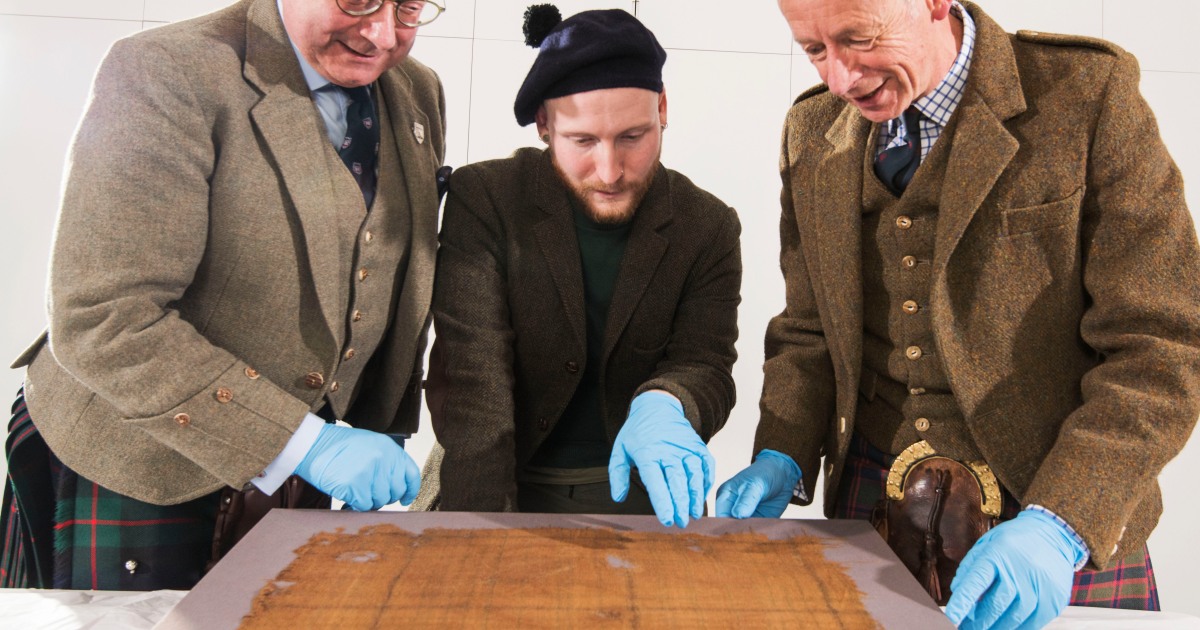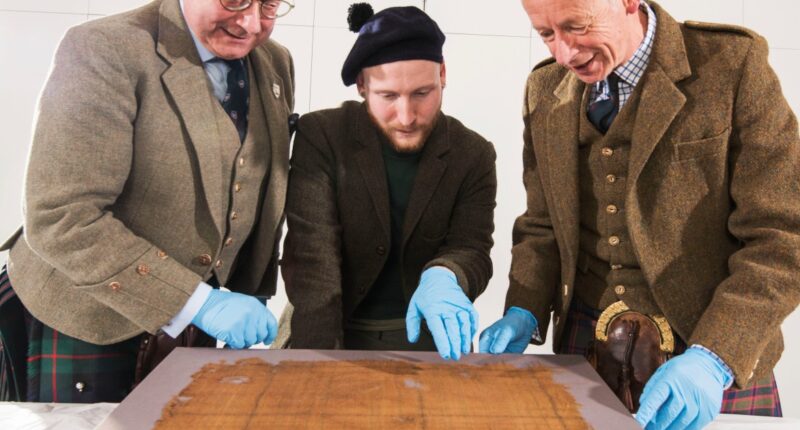
Northern European bogs’ cool and waterlogged conditions create low-oxygen and highly acidic environments, which are ideal for preservation.
This unique chemistry has allowed artifacts to endure for centuries, with archaeologists digging up everything from 3000-year-old butter to remains of a 4000-year-old man in a body bag with intact skin.
While Scottish soil itself is not conducive to survival of the fabric, its burial under peat, which forms when vegetable matter partially carbonizes, meant “it had no exposure to air and was therefore preserved,” Peter MacDonald, Head of Research and Collections at The Scottish Tartans Authority said in a statement.
“The testing process has taken nearly six months but the effort was well worth it and we are thrilled with the results!” MacDonald said.
The analysis, conducted by scientists from the Scottish National Museums, indicated the presence of four colors: green, brown and possibly red and yellow.
“The tartan has several colors with multiple stripes of different sizes, and so it corresponds to what people would think of as a true tartan,” MacDonald said.
The plaid patterns are traditionally designed and woven in Scotland and have been used for centuries by Scottish clans and families as a badge of identity.
“The potential presence of red, a color that Gaels considered a status symbol, is interesting because of the more rustic nature of the cloth,” he said, referring to the Gaelic-speaking ethnic group in Scotland, Ireland and Isle of Man.
“This piece is not something you would associate with a king or someone of high status; it is more likely to be an outdoor working garment,” he added.
The use of indigo or woad in the green color and the lack of any synthetic dye indicated it was made before the 1750s, the museum said in a statement. Subsequent radiocarbon testing identified the most probable period as between 1500 and 1600 AD.
Modern adaptations of Tartan-like styles, commonly referred to as plaid, have become a popular fashion choice for many.
“To be able to exhibit the Glen Affric tartan is immensely important in understanding the textile traditions from which modern tartan derives, and I’m sure visitors will appreciate seeing this on public display for the very first time.” James Wylie, curator at V&A Dundee, said in a statement.
Source: | This article originally belongs to Nbcnews.com









